The bridge is a natural sandstone arch 50 kilometres (31 mi) northeast of Siem Reap River. Just after the monsoon season, when the water level in the river starts dropping, the carvings are visible in a 150 metres (490 ft) stretch upstream of the bridge and from the bridge downstream up to the falls.
The 11th century carvings in this stretch of the river are a galaxy of gods, the trinity of Brahma, Vishnu and Shiva or Maheswara and celestial beings; several carvings of Vishnu with Lakshmi reclining on the serpent Ananta, Shiva with consort Uma, known as Umamaheswar Brahma on a lotus petal over a plant stem rising from the navel of Vishnu, Rama and Hanuman are the sculptures seen not only in the river bed but also on the river banks.
Sequentially, while walking along a path which skirts the eroded channel of the river-formed natural stone bridge, one can see a pair of Vishnu sculptures with Lakshmi seated at his feet in a reclining pose. Upstream of the bridge, there is a sculpture of Shiva and Uma mounted on the bull. Approximately 30 metres (98 ft) downstream of the bridge, there are additional Vishnu sculptures.
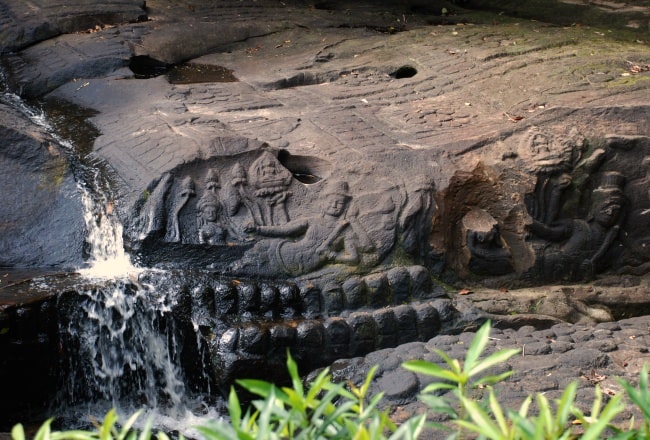
Further downstream up to the water fall and till the water pool are the Sahasra lingas in Sanskrit language with English equivalent name of "Thousand Lingas". The sculpted lingams in the coarse sandstone riverbed outcrops are seen from about 6 metres (20 ft) downstream of the bridge.
According to the journalist Teppo Tukki of Phnom Penh Post who visited the site in 1995, the lingams, some of which date back to the 9th century, are about 25 centimetres (9.8 in) square and 10 centimetres (3.9 in) deep and lined in a perfect grid pattern.
The river runs over them, covering them with 5 centimetres (2.0 in) of pristine water. The holy objects are designed to create a "power path for the Khmer Kings".
After the carvings, the river falls by 15 centimetres (5.9 in) to a clear water pool. As it flows over the holy lingams, the river attains a sanctified status and passes through the temples that are downstream. The visible lingams are in a rectangular enclosure with a channel flowing out, which is interpreted to represent the yoni as the "female principle".
Beyond these lingams, the river stretch of about 40–50 metres (130–160 ft) includes a small rocky island and ends over a fall into a pool. In this stretch of the river, there are bas reliefs on the rock faces. It has been inferred that one of the bas reliefs in this stretch, the central figure, unrecognizably damaged, could be that of Shiva as an ascetic, similar to the bas relief seen in Angkor Wat temple.
The meaning of the crocodile carving seen here has not been ascertained. Near to this location, a boulder has been carved as a frog. The pond, in a rectangular shape, filled with water at all times, has many "Reclining Vishnu" carvings on the walls, and here again, a pair of crocodiles are carved but with their tail held by women. The small island formed in this stretch of the river has carvings of Shiva and Uma mounted on a bull.
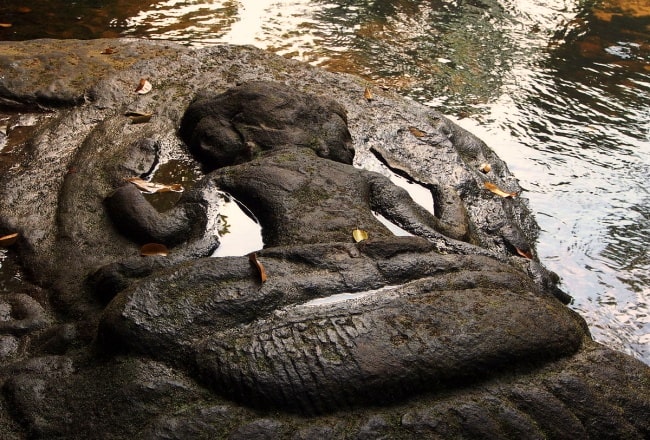
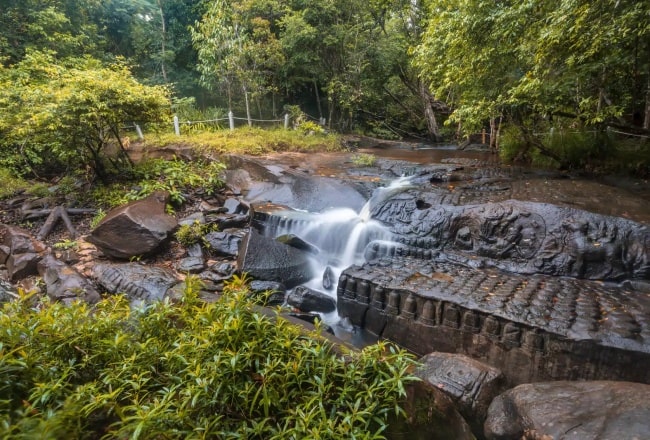


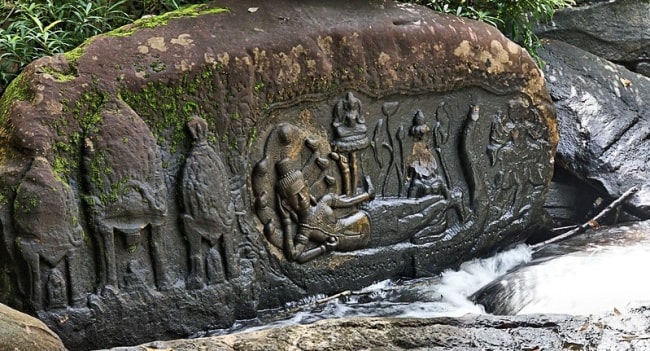

 15/01/2026
15/01/2026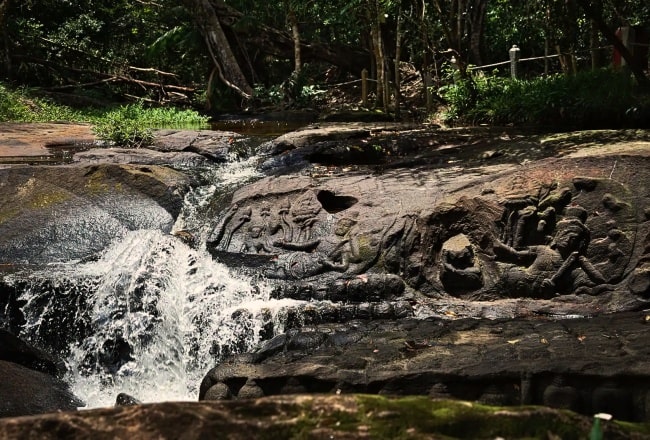
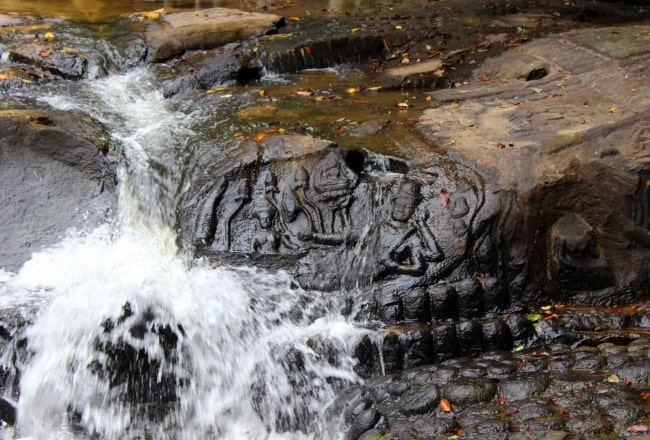
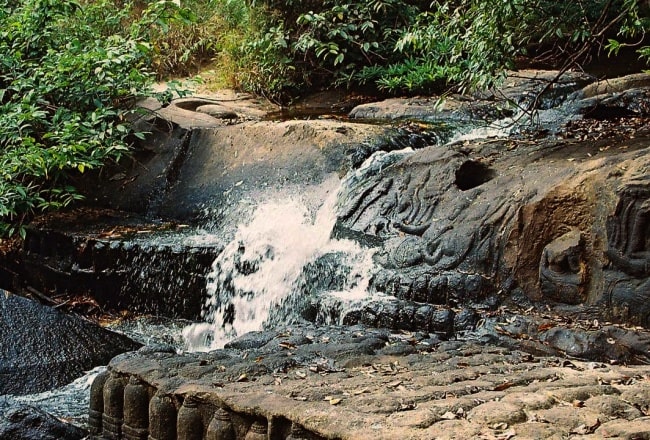
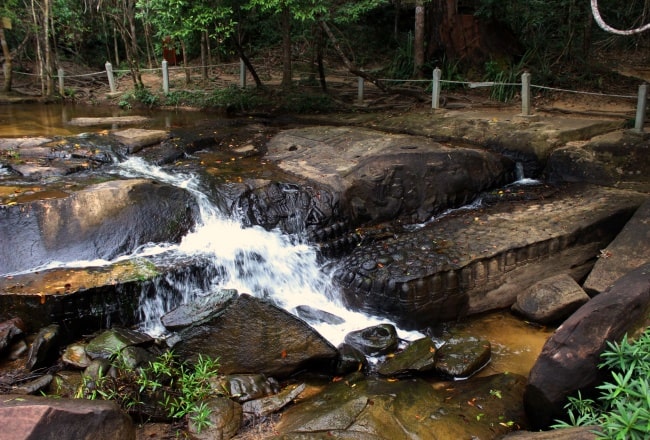
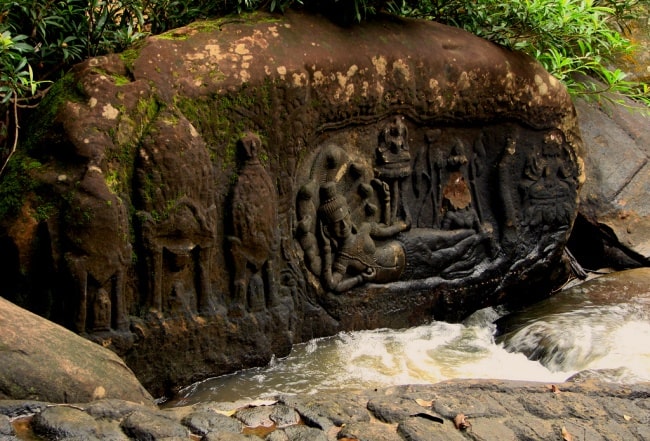
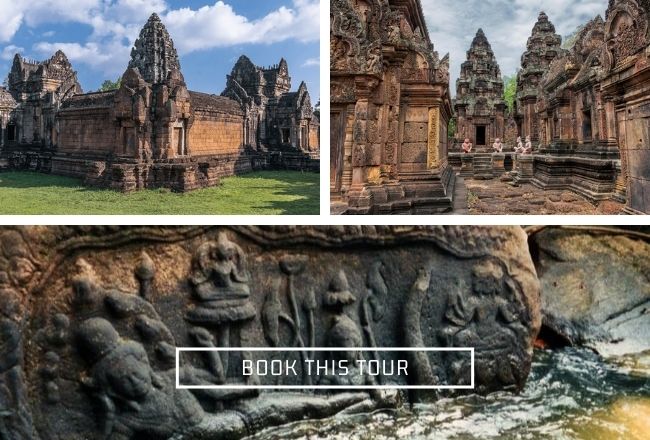
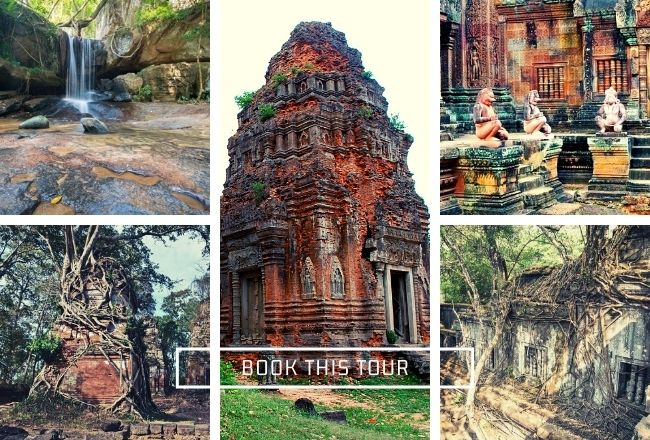


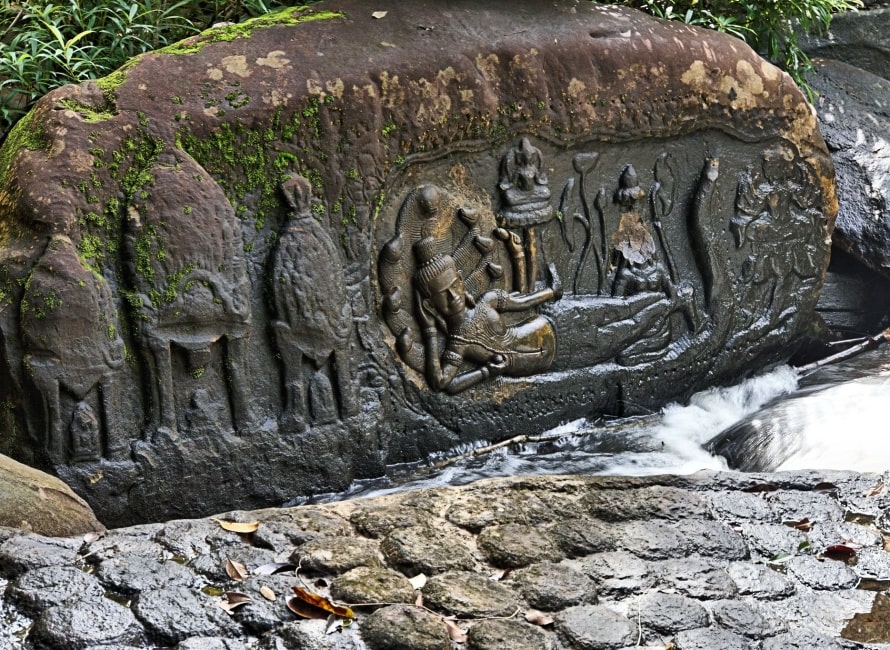
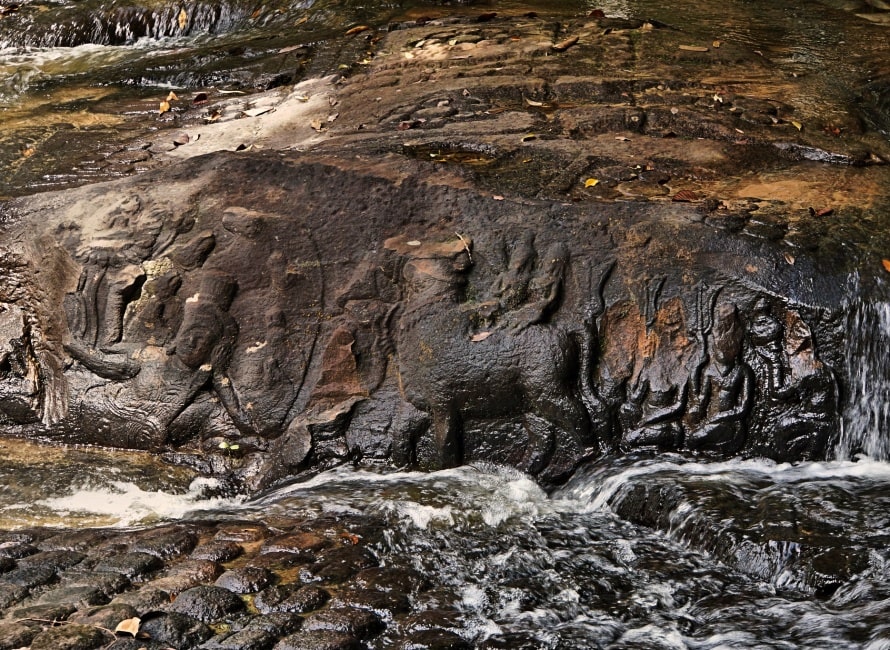
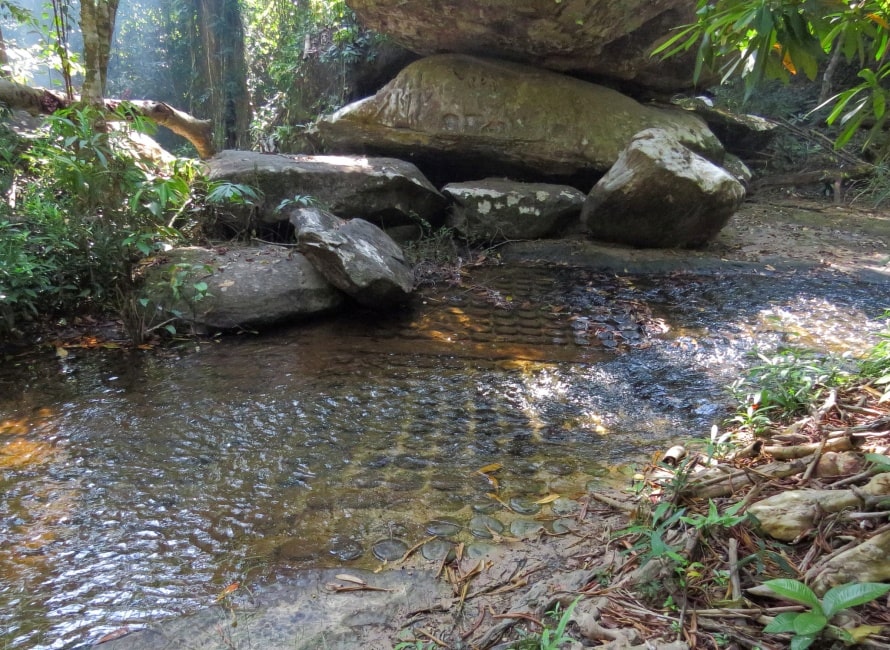

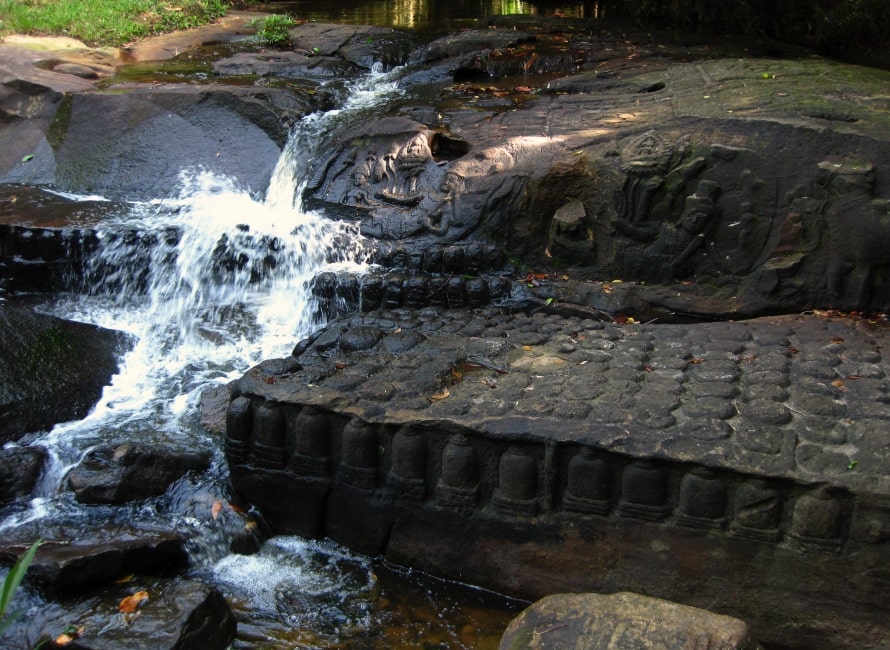

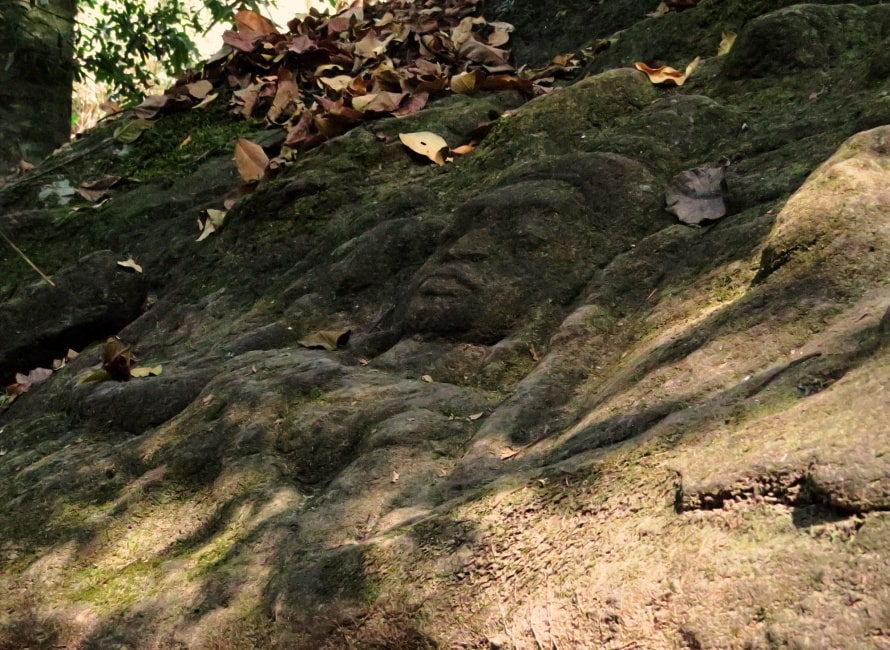
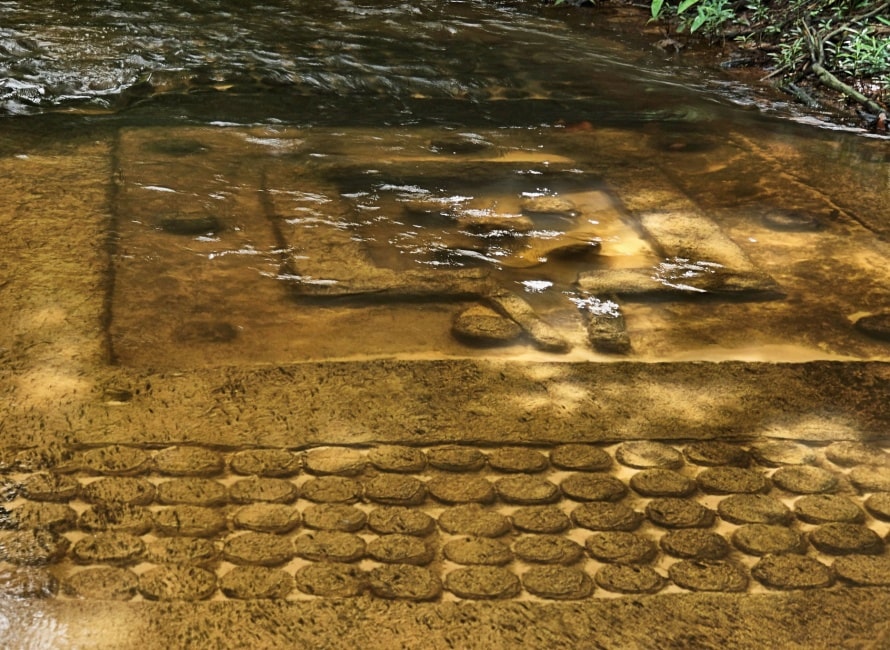





















Jolie LIEMMy name is Jolie, I am a Vietnamese girl growing up in the countryside of Hai Duong, northern Vietnam. Since a little girl, I was always dreaming of exploring the far-away lands, the unseen beauty spots of the world. My dream has been growing bigger and bigger day after day, and I do not miss a chance to make it real. After graduating from the univesity of language in Hanoi, I started the exploration with a travel agency and learning more about travel, especially responsible travel. I love experiencing the different cultures of the different lands and sharing my dream with the whole world. Hope that you love it too!